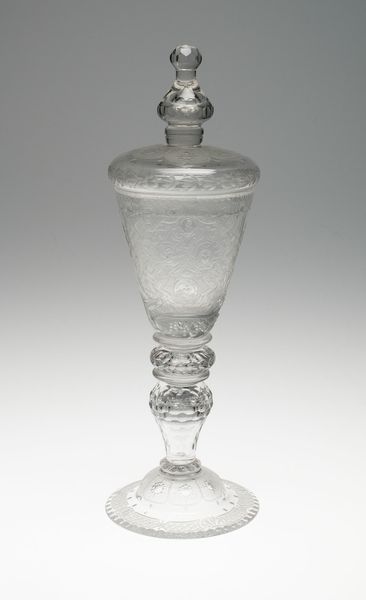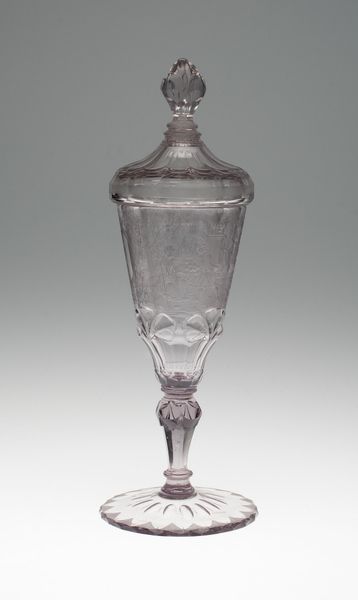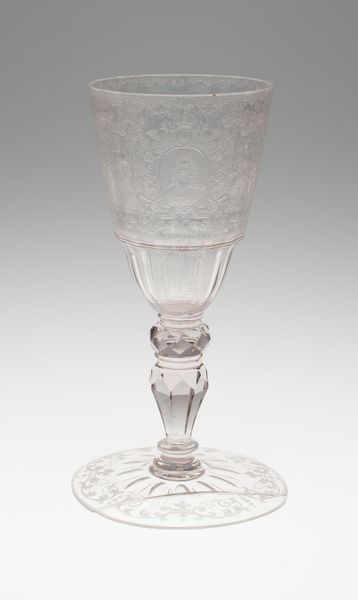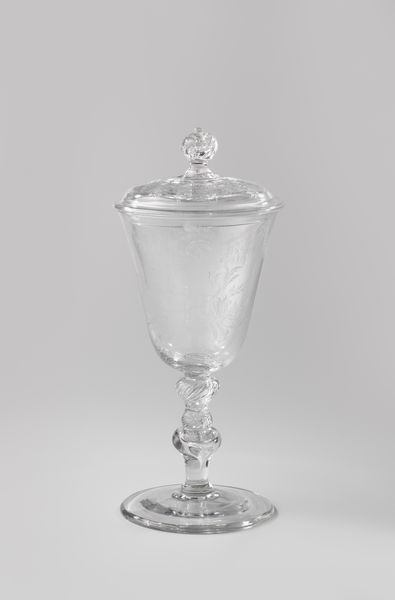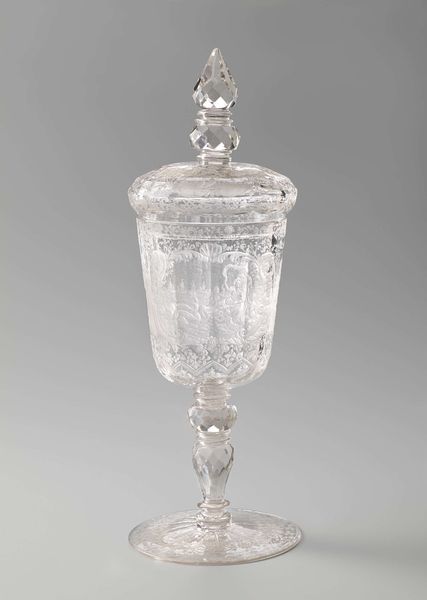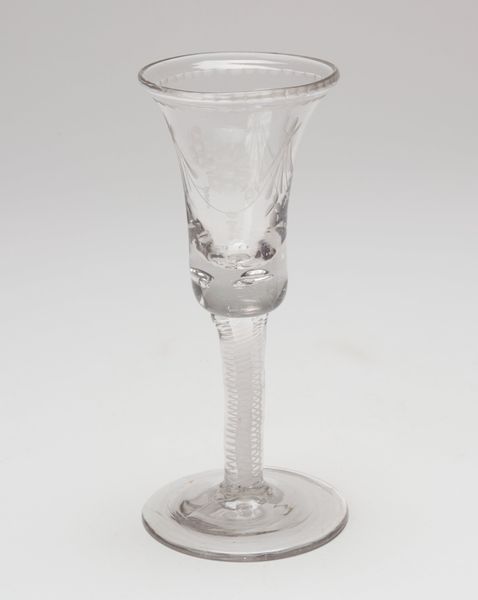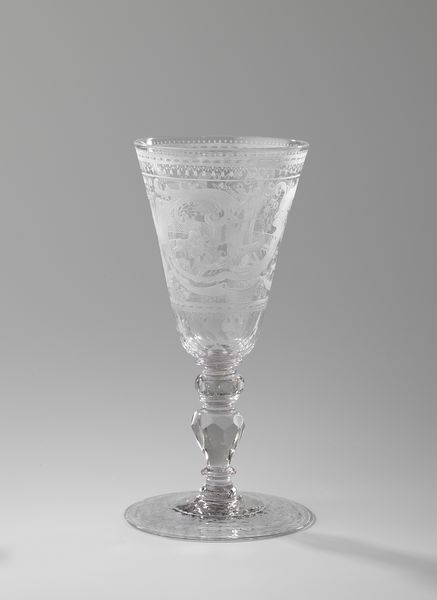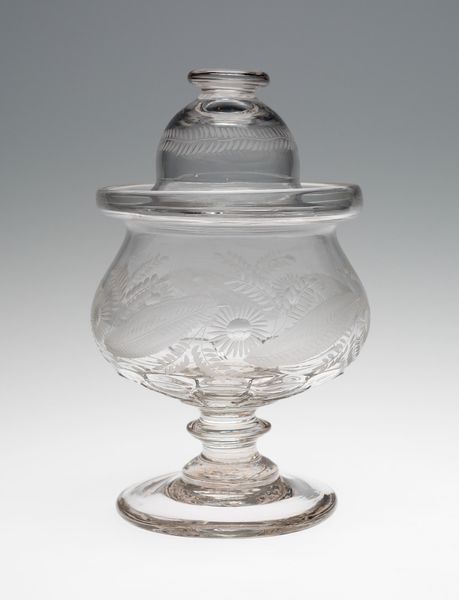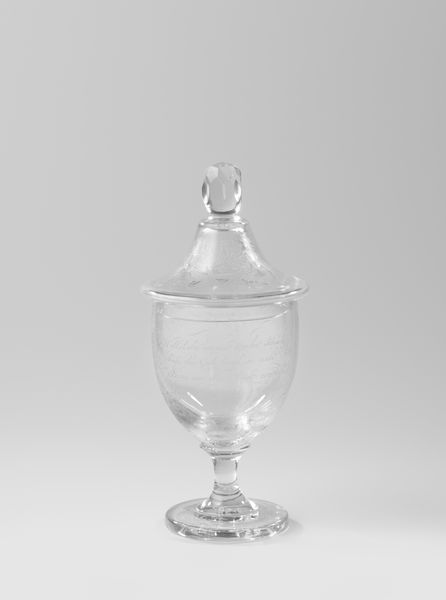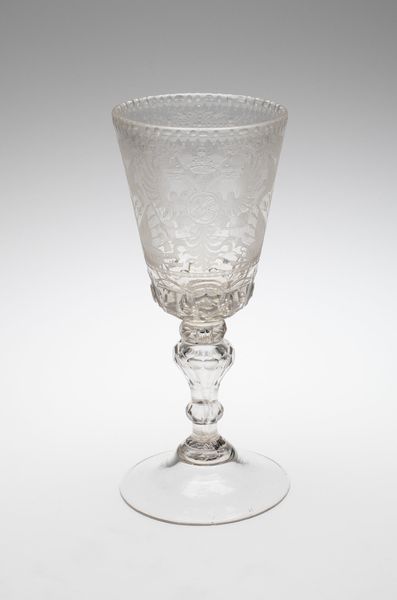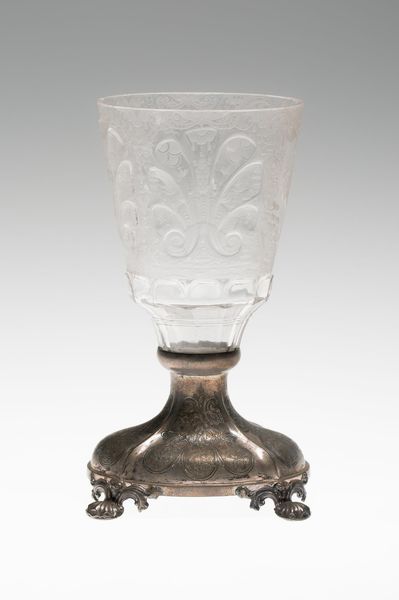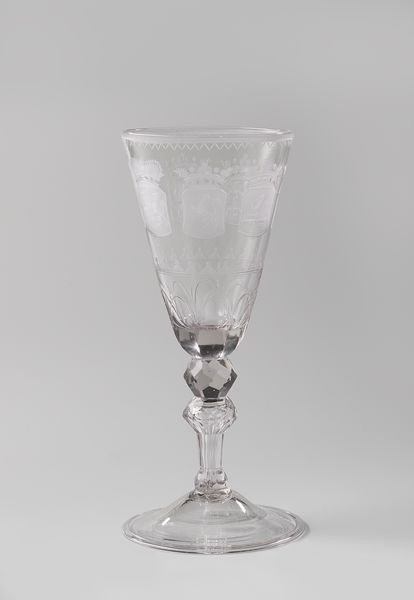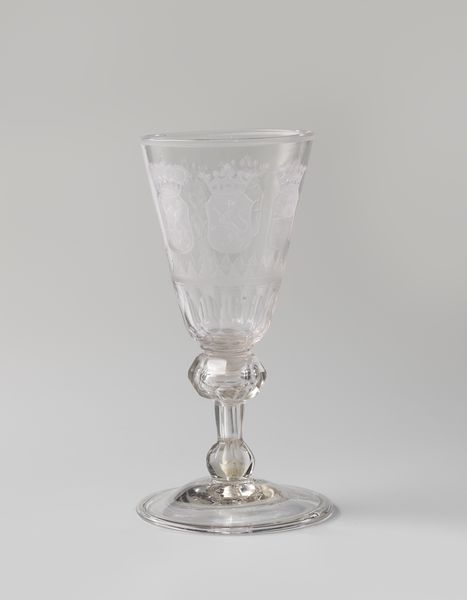
glass
#
glass
#
decorative-art
#
rococo
Dimensions: 32.1 × 10.3 cm (12 5/8 × 4 1/16 in.)
Copyright: Public Domain
Curator: This is a covered goblet crafted by Jacob Sang in 1752. It’s currently part of the Art Institute of Chicago's collection. Note the elegant Rococo style. Editor: It’s almost ethereally fragile looking. All that detailed, almost frosted work on the glass... it’s hard to believe something like this could survive centuries intact. Curator: Indeed. Its creation in glass and intricate etching represent mastery of the medium during its time. Notice how the delicate ornamentation on the goblet's stem flows upwards to its bowl-shaped top. Editor: And it’s got quite the cheeky scene engraved on the glass itself, hasn’t it? The "Goddess Diana Bathing" provides, quite literally, a surface-level peek into the values of its time – a fascination with mythology intertwined with male gaze. I wonder about the intended audience… and if any women got to enjoy a goblet portraying a goddess’ bath. Curator: A valid observation. One could analyze the etching through the lens of structuralism, focusing on recurring visual elements such as the arcadian setting and mythological figures to deconstruct its symbolic vocabulary. Its themes also mirror neoclassical painting—emphasizing the idealized nude figure, the importance of antiquity and allegorical narratives. Editor: Perhaps. It is a very fancy drinking glass. All those clear clean lines almost make it feel clinical… an odd sort of contrast, to me. The elitist origins for everyday objects… Who drank from this, and how different were their lives from the artisan that created it? It seems quite distant from any kind of real, honest life. Curator: The material's transparency creates a stunning visual effect. Light passes through the entire structure, and emphasizing both the three-dimensional structure and its meticulous embellishment. Editor: Agreed, seeing the historical context really transforms our perspective, doesn't it? Highlighting the contrast between beauty and utility makes one consider not just the “what” but the "why" behind artistic creation and its reception across generations.
Comments
No comments
Be the first to comment and join the conversation on the ultimate creative platform.
